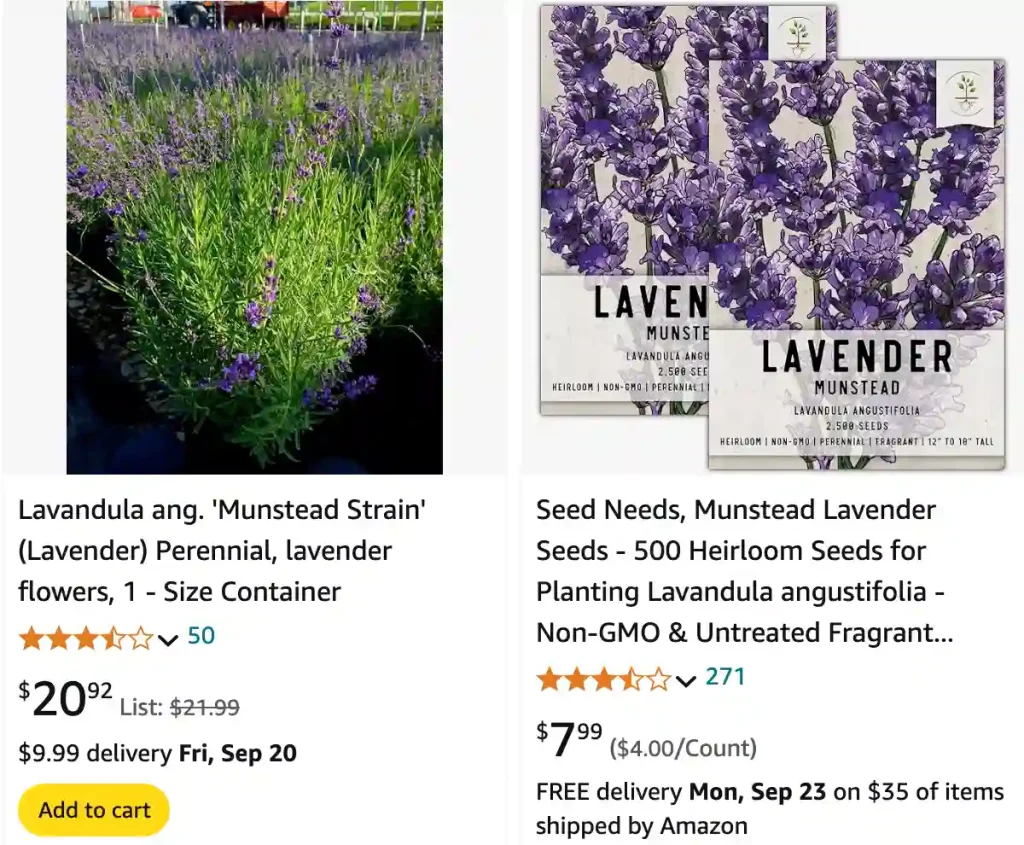
FAQs About Lavandula Munstead
Lavandula Munstead is a popular lavender variety known for its compact growth and fragrant blooms. If you’re considering adding this beautiful plant to your garden or simply want to learn more, here’s a comprehensive guide based on frequently asked questions.
49 Species in Genus Lavandula
What is Lavandula Munstead?
Lavandula Munstead is a type of English lavender, distinguished by its rich, aromatic purple flowers and neat, rounded shape. It’s named after Munstead Wood, the garden of renowned horticulturist Gertrude Jekyll. This variety is favored for its resilience and versatility in various garden settings.
How to Care for Lavandula Munstead?
Caring for Lavandula Munstead involves a few key steps:
- Sunlight: Lavandula Munstead thrives in full sun. Ensure it receives at least 6 to 8 hours of direct sunlight daily.
- Soil: It prefers well-drained soil with a pH between 6.5 and 7.5. Sandy or loamy soil works best. Avoid heavy, clay soils that retain water.
- Watering: Water the plant sparingly. Once established, Lavandula Munstead is drought-tolerant. Overwatering can lead to root rot.
- Pruning: Regular pruning helps maintain the plant’s shape and encourages new growth. Trim the plant after flowering, cutting back about one-third of its height.
- Fertilizing: Use a balanced, low-nitrogen fertilizer in the spring. Avoid high-nitrogen fertilizers, as they promote leaf growth over flowers.
How to Maintain Lavandula Munstead?
To maintain Lavandula Munstead, follow these tips:
- Mulching: Apply a layer of gravel or coarse mulch around the base to help with drainage and temperature regulation.
- Pests and Diseases: Watch for pests like aphids or spider mites and treat them with insecticidal soap if necessary. Ensure good air circulation to prevent fungal diseases.
- Winter Care: In colder climates, protect the plant with a layer of mulch or burlap to shield it from harsh winter winds.
How to Propagate Lavandula Munstead?
Lavandula Munstead can be propagated through several methods:
- Seeds: Sow seeds indoors 6 to 8 weeks before the last frost. Lightly cover the seeds and keep the soil moist. Transplant seedlings outdoors after the danger of frost has passed.
- Cuttings: Take 4 to 6-inch cuttings from a mature plant in the summer. Dip the cut ends in rooting hormone and plant them in a mix of perlite and peat. Keep the soil moist and the cuttings in a warm, bright location until roots develop.
What to Plant with Lavandula Munstead?
Lavandula Munstead pairs well with various plants:
- Companion Plants: It complements other Mediterranean plants like rosemary, sage, and thyme.
- Color Contrast: Plant with yellow or white flowers such as coreopsis or daisies for a vibrant contrast.
- Herb Garden: Combine with other herbs like oregano and chives to create a fragrant, functional garden space.
Can You Grow Lavandula Munstead Indoors?
Growing Lavandula Munstead indoors is possible but challenging. It needs a lot of sunlight, so a south-facing window or grow lights are essential. Ensure the indoor environment is well-ventilated and avoid overwatering. A container with good drainage is crucial to prevent root rot.
Is Lavandula Munstead Toxic?
Lavandula Munstead is generally considered non-toxic to pets and humans. However, it’s always best to monitor pets and children around plants, as ingestion of large amounts might cause mild gastrointestinal upset.
Benefits of Lavandula Munstead
Lavandula Munstead offers several benefits:
- Aromatic Qualities: Its fragrant flowers are used in making essential oils, sachets, and culinary dishes.
- Pest Repellent: Lavender is known for repelling pests like mosquitoes and moths.
- Low Maintenance: Once established, it requires minimal care, making it an excellent choice for low-maintenance gardens.
Common Problems with Lavandula Munstead
Some common issues include:
- Root Rot: Often caused by overwatering or poor drainage.
- Fungal Diseases: Powdery mildew can occur in humid conditions.
- Leggy Growth: May result from insufficient sunlight or lack of pruning.
Lavandula Munstead vs Hidcote
When comparing Lavandula Munstead to Lavandula Hidcote:
- Size: Munstead is generally smaller and more compact than Hidcote.
- Flower Color: Munstead has a soft purple hue, while Hidcote tends to have a deeper, more intense color.
- Growth Habit: Hidcote can grow a bit taller and is known for its dense, bushy habit, whereas Munstead has a more rounded shape.
Both varieties are excellent choices, but your preference may depend on the specific look you want and your garden’s conditions.
In summary, Lavandula Munstead is a versatile and attractive lavender variety with numerous benefits. Whether you’re new to gardening or a seasoned pro, incorporating this plant into your garden can enhance its beauty and functionality.
If i die, water my plants!



